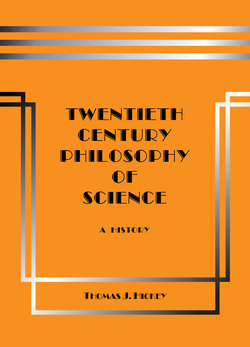Читать книгу Twentieth-Century Philosophy of Science: A History (Third Edition) - Thomas J. Hickey - Страница 76
На сайте Литреса книга снята с продажи.
3.45 Pragmatic Definition of Observation Language
ОглавлениеObservation language is test-design sentences that are given particular logical quantification for describing an individual test procedure and execution including the reporting of the test outcome.
After scientists have formulated and accepted a test design, the universally quantified language setting forth the design determines the semantics of its observation language. Particularly quantified language cannot define the semantics of descriptive terms. The observation language in a test is sentences or equations with particular logical quantification accepted as experimentally or experientially true and used for description, and it includes both the test-design sentences describing the initial conditions and procedures for an individual test execution and also the test-outcome sentences reporting the outcome of an executed test. This is a pragmatic concept of observation language, because it depends on the function of such language in the test. Contrary to positivists and earlier philosophers, pragmatists reject the thesis that there is any inherently or naturally observational semantics.
If a test outcome is not a falsification, then the universally quantified theory is regarded as a scientific law, and the theory contributes its semantics to the meaning complex associated with the descriptive terms in the universally quantified test-design sentences. Additionally the terms in the universally quantified test-design sentences contribute their semantics to the meaning complex of the theory’s terms. These semantical contributions reduce vagueness, and do not depend on the logical derivation of test-design sentences from the theory sentences. But where such derivation is possible, coherence is increased and vagueness is thereby further reduced. Furthermore due to a mathematical derivation test-outcome measurement values may be changed to numerical values that still fall within the range of measurement error, and the measurement accuracy may be judged improved.
